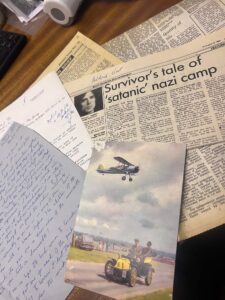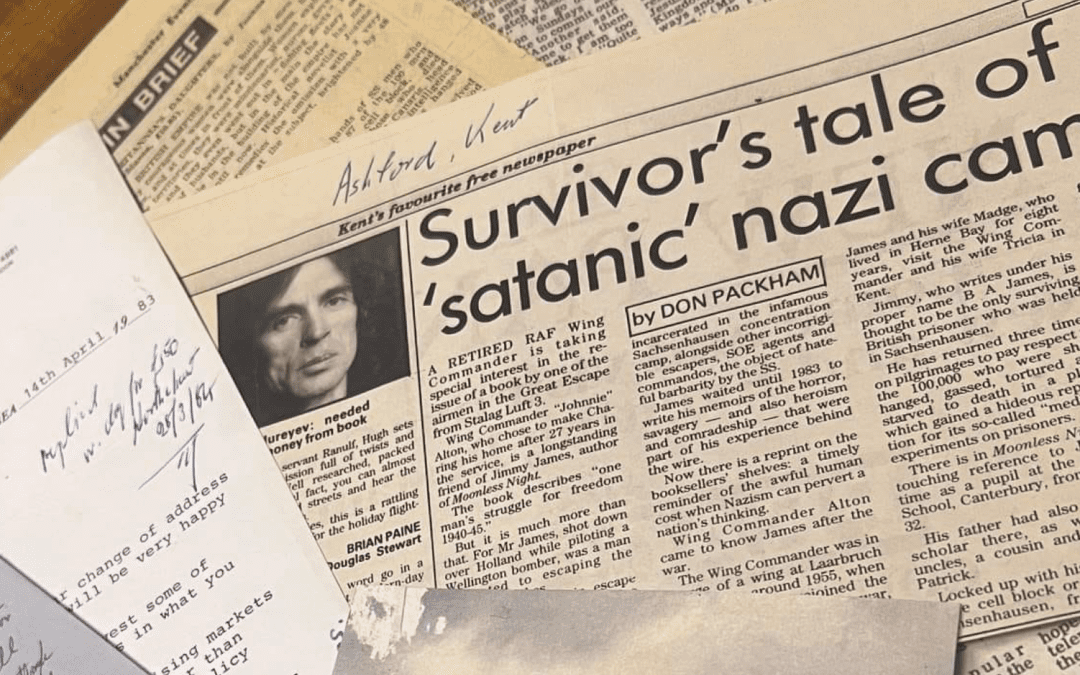In this week’s #ForgottenFriday we are so excited to talk about a surprising recent donation made to Eden Camp.
The Donation
Last week, we were extremely lucky to receive a rare piece of social and military history. These documents come from a British survivor of The Great Escape, Bertram Arthur ‘Jimmy’ James, better known as Jimmy James.
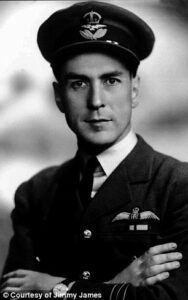
We were given an array of artefacts including drafts and drawings of his novel, Moonless Night, and some information regarding the tunnels Tom, Dick, and Harry from the Great Escape itself! Jimmy James was an officer of the RAF, and reached the rank of Squadron Leader. With Jimmy’s great achievements and act of service he was awarded the Military Cross.
Who is Jimmy James?
James was born in India, the son of a tea-planter, Herbert Mark James (son of Canon Mark James) and his wife Elizabeth Isabella Loosemore. James was educated at The King’s School, Canterbury. Returning to London following his mother’s death, James and his father started a tea importing business that suffered from the 1930s economic downturn and ultimately failed. Soon after, his father died of pneumonia which left Jimmy alone. Recalling that he had relatives in the United States, he worked his passage on a coal ship across the Atlantic, often acting as pilot due to the drunken nature of the crew. Upon arrival, he soon realised that his relatives were also suffering due to the Great Depression that was sweeping across the US.
Work was scarce, but he managed to find a job acting as a security guard in a local bank. “They gave me a gun and told me to watch the door. If anyone came through it, I was to shoot them”, Jimmy recalled to his great friend, Howard Tuck. He worked in British Columbia from 1934 until volunteering for pilot training with the RAF in 1939 after seeing a recruiting poster in Vancouver. Taking another ship back to the UK, Jimmy soon found himself at the Air Force selection board in London before heading off for IOT (initial officer training).
Active Service
James was initially commissioned as an acting pilot officer, and was promoted to pilot officer (on probation) on 9th December 1939. That rank was confirmed on 28th February 1941 (back-dated to 1 May 1940) when he was also promoted to war substantive flying officer with effect from 9 December 1940.
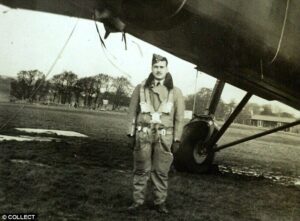
James was posted to No. 9 Squadron RAF at RAF Honington in April 1940 after completing his flying training. He was a second pilot of a Wellington bomber when he was shot down over the Netherlands on 5th June 1940 and he was then taken prisoner.
As a POW
Following initial interrogation, James and a small band of others were taken to Berlin and paraded through the capital.
“It was a rather ghastly affair really. They weren’t hostile, as the bombing hadn’t really started, but we were rather curious to them, I suppose”.
From Berlin, James was moved to the notoriously bleak Stalag Luft I at Barth on the northern coast of Germany. The camp was still under construction at this stage of the war and the reality was that the Germans were only slowly coming to terms with POWs. Within a matter of days, Jimmy and W/Cdr John ‘Death’ Shore were planning an escape – the route was to be via the camp incinerator. Digging a highly audacious tunnel, John Shore managed to clear the wire and escape, whilst Jimmy was caught in the act and sent directly to the cooler.
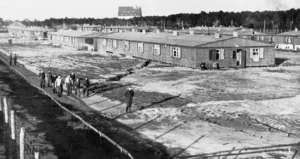
Over the next five years, he made thirteen efforts to escape from various prisons and camps, including Stalag Luft III, the site in March 1944 of the so-called Great Escape. A central figure in the story of the Great Escape, Jimmy James, together with Peter Fanshawe, was largely responsible for depositing the soil from Tunnel Harry under seat 13 in the camp theatre (built by prisoners). On the night of the escape, 24 March 1944, James and his partner, Pilot Officer Sotirios (Nick) Skantzikas, were disguised as Yugoslav workers trying to get home.
Known as the ‘hardarsers’ group, they and others made their way south from the camp to the tiny rail stop at Tschiebsdorf (now Trzebów) about 8 km south of Sagan. After a treacherous night of walking through deep snow to reach Hirschberg, James and Skantzikas eventually found their way to Hirschberg West station and, attempting to purchase a ticket south, the two were arrested by the Criminal Police (Kripo) and taken to the Gestapo HQ in the town. Following a transfer to the local prison, Skanzikas was taken out to be shot, whilst James remained in his cell totally unaware of why he was saved from execution.

Sachsenhausen
In Berlin, SS-Gruppenführer Nebe was ordered by Heinrich Müller, Chief of the Gestapo, to select and kill fifty of the seventy-three recaptured prisoners in what became known as the “Stalag Luft III murders”. Fifty were then executed, James being one of a handful sent instead to the Sachsenhausen concentration camp. On 23 September 1944, James escaped from Sachsenhausen, accompanied by Jack Churchill, Harry Day, Johnnie Dodge and Sydney Dowse using small cutlery knives to dig an escape tunnel over 110 metres long.
Towards the end of the War
On the run for several weeks, he was finally arrested in Pomerania before being transferred back to solitary confinement in Sachsenhausen. James’s cell was tiny, just enough to stand up and stretch. For over 4 months Jimmy James suffered daily harassment from the guards, mock executions and, of course, virtually no food. As the Red Army was approaching, the SS decided to move the Prominenten prisoners further south, possibly to act as a bargaining chip with the Allies – though this has never been confirmed. Following a torturous journey via Dachau and Flossenbürg concentration camps, James and other Prominenten were moved to the South Tyrol where they were eventually liberated by partisans and US Army troops in May 1945.

After the war, he married Madge who was a nurse, who he met in an Officers Club at Vlotho in Germany. Their honeymoon was a remarkable journey as they drove to the far tip of Norway in a former German Army VW Beetle.
Inside the treasure trove we were given by Mr Richardson, there was photos of Jimmy and Madge and various cards exchanged between the pair which will be held together in our collections here at the museum.
